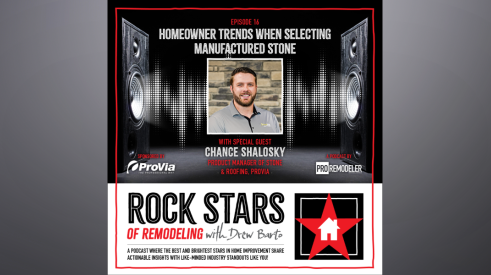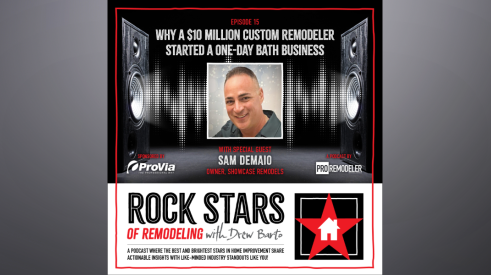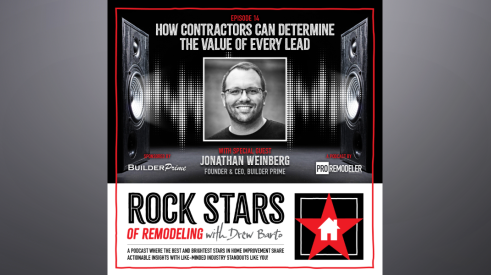It could be a customer call or email telling you she observed your crew sharing a joint on the roof. Or maybe you have a field guy whose eyes look bloodshot and who often says off-the-wall things. Maybe you found an empty pint of Johnnie Walker in the glove compartment of a company truck. Or maybe your marketing manager is out sick on a Monday or a Friday for the fifth time in two months.
If any of these scenarios sounds familiar, here’s a fact that won’t surprise you: The construction industry just about tops the list when it comes to heavy alcohol use. DrugRehab.com cites a study conducted from 2008 to 2012 by SAMHSA (Substance Abuse and Mental Health Services Administration), reporting that “the construction industry had the second highest rate of heavy alcohol use among full-time workers.” The study also points out that the industry “employs more workers with substance use disorders than any other profession.” Here are some of the findings for full-time construction workers:
- 16.5% (1.6 million people) drank heavily in the past month
- 11.6% (1.1 million people) used illicit drugs in the past month
- 14.3% (1.4 million people were addicted to alcohol or other drugs.
Safety First
Mining has a higher rate of alcohol abuse, and hotel and restaurant workers lead the pack when it comes to consuming illicit drugs. The more telling statistic, however, is the fact that when it comes to workplace fatalities, construction tops the list. Combine the risks inherent in the job with the frequency of substance abuse and you have a problem. “Construction Leads All Industries in Total Worker Death,” according to Kendall Jones in an article at Constructconnect.com.
He cites the Bureau of Labor Statistics and its Census of Fatal Occupational Injuries to indicate that not only does the construction industry lead in worker fatalities, but the number of deaths in construction is once again rising.
For owners, then, safety is the first reason substance abuse matters as much as it does. Workers need full concentration, focus, and awareness when operating tools or heavy equipment, or when climbing ladders or working on scaffolding or a roof.
Substance abuse enhances the risk of accidents, fatal or otherwise, but that’s far from the only problem. Add to it issues such as the loss of work time, diminished quality of work, increased accident and machinery costs, theft, absenteeism, decreased morale, and elevated risk of sickness. Beyond all that, notes Diversified Safety Services, “employers face the risk of lawsuits because of at-fault accidents and increased insurance premiums, if they can even get insured at all without an alcohol and drug policy.”
Put a Policy in Place
Given the prevalence of substance abuse in the industry, creating a policy is a necessary first step. Not having a company policy, no matter the size of your payroll, invites the problem in. Without a policy, you have no fallback for managing around that behavior, and no specific rules you can say were broken. With a policy in place, no one can claim he wasn’t aware he was doing something wrong because the rules are clearly spelled out in writing. Putting such a policy in place says that you’re aware that the problem exists or could exist and that it won’t be tolerated.
What does a substance abuse policy contain? As described in “Elements of a Drug-Free Program” at WorkingPartners.com, a substance abuse policy “outlines the responsibilities of employer and employee, references available help, and explains the program including prohibited conduct, types and circumstances of testing, and the consequences for violations.”
Fortunately, you don’t have to start from scratch. Plenty of examples exist online at sites such as Workable.com, The Institute for a Drug-free Workplace, and others. (Laws vary by state. To ensure compliance, consult with an attorney, HR professional, or local Department of Labor and Industry.)
Once you have a policy in hand, circulate it among managers and staff, call a meeting to discuss it, then include it in your company manual or in the company handbook. Going forward, make sure it is part of orientation for new employees and continuing education programs for existing employees. “Effective employee education programs,” says the Substance Abuse Program Administrators Association, “provide company-specific information, such as the details of the drug-free workplace policy, as well as generalized information about the nature of alcohol and drug addiction; its impact on work performance, health and personal life; and types of help available for individuals with related problems.”
Testing, Testing
Drug testing can be scheduled as pre-employment, random, reasonable suspicion, after an accident, return-to-duty, or as a follow up. With random testing, a computer-generated selection identifies one person for screening. A urine sample is collected and screened for alcohol, amphetamines, benzodiazepines, marijuana, cocaine, PCP, or opioids, or some combination thereof.
Testing usually involves contracting with a testing service, such as Quest Diagnostics, that will charge on a per-test basis. You’ll need written consent from employees to test (find a free consent form template at i-sight.com). And since many states have stepped in to regulate drug testing, there are certain legal constraints to be aware of, depending on where your business is located. “In some states, companies cannot conduct blanket drug tests of all employees or random drug tests; the testing must be focused on an individual, either because the employer has a good reason to believe that person is using drugs or because the person's job carries a high risk of injury or damage if performed by someone who is under the influence,” according to legal site Nolo.com.
Random testing functions as a deterrent. “The real purpose of random testing is NOT to ‘catch’ employees that are using drugs. It is to prevent employee workplace drug abuse,” points out Ed Poole, president/COO of OHS Inc., a California corporation providing workplace drug testing.
Last Piece
In formulating a policy on substance abuse, you have to spell out what happens to people who fail the test, whether that’s once, twice, or three times. Your choices are: termination, workplace probation, or requiring that the substance abuser seek treatment.
What if they’re valuable people? Do you make exceptions? Wouldn’t you rather they seek help but stay on?
If your company offers an Employee Assistance Program (EAP), which makes no-cost counseling available to employees and their family members, you may want to steer substance abusers in that direction as a way for them to get long-term help. An EAP “can provide referrals to substance abuse counselors and rehab facilities,” says Francine Richards writing at Chron.com. But, as website mobilehealth.net points out, “the most important part to remember is to always be consistent. If employees realize that different consequences are happening to different employees, the business may be liable to discriminatory lawsuits.”
Add new comment
Related Stories
Home Improvement Success: Luck, Hard Work, or Who You Know?
Even the most brilliant marketing mind could see fewer opportunities due to lack of networking
Homeowner Trends When Selecting Manufactured Stone
On this episode of Rock Stars of Remodeling, ProVia Product Manager of Stone & Roofing Chance Shalosky joins host Drew Barto to reveal design and color trends that contractors should consider when selling manufactured stone in 2024
Why A Successful Custom Remodeler Started a One-Day Bath Business
On this episode of Rock Stars of Remodeling, Showcase Remodels Owner Sam DeMaio shares why he decided to add a one-day bath business and offers tips on how contractors can accumulate wealth
Learn from the Best in Home Improvement and Remodeling
This year’s Pinnacle Experience aims to help remodelers stay ahead of their competitors by featuring captivating keynote speakers and subject matter experts, collaborative roundtable discussions, and networking with proven players from across the country.
Get the Most Out of Your Teams with This Leadership Style
The transformational leadership style focuses on inspiring and motivating team members to achieve their full potential and exceed their expectations
3 Reasons Contractors Should Set Same-Day Sales Appointments
Director of Home Improvement Drew Barto writes that contractors that aren't implementing same-day sales appointments are missing out on opportunities to close more business
Registration Open for The Pinnacle Experience 2024
Register today for The Pinnacle Experience 2024 in Baltimore from June 26-28. Join the best and brightest in home improvement and remodeling for insight, advice, and relationship-building that will help you take your business to new heights.
How Contractors Can Determine Lead Value
On this episode of Rock Stars of Remodeling, Builder Prime Founder and CEO Jonathan Weinberg reveals how contractors can effectively determine the value of each lead to their business, and why they must do so
24 Marketing Tips for Home Improvement Contractors in 2024
Quick-hitting advice on how contractors can increase and enhance lead flow in 2024
Rising Financing Fees to Impact Home Improvement Industry
NEWPRO Home Solutions COO shares his expert insight on the challenges facing the home improvement industry in 2024 for Pro Remodeler's Thought Leader predictions series












